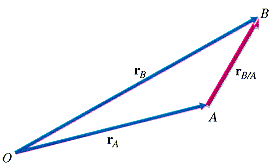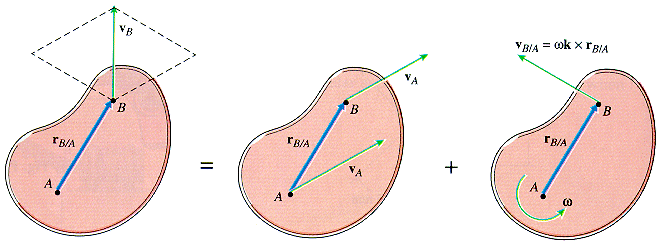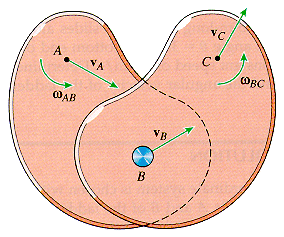
General Plane Motion
We will now see that general plane motion is simply a superposition of translation and fixed axis rotation.
Absolute Motion
Relative Motion
Relative Velocity
As before,

which is valid for any two particles.
However, if particles A and B are two points in the same rigid body, then the distance between them is constant and point B appears to travel a circular path around point A (as seen with respect to point A).
Therefore, the relative velocity can be written in terms of a unit vector tangent to the circle centered at A and the angular velocity of the body, i.e.

where the superposition principal says that the velocity of point B of a rigid body is equal to the translation of the entire rigid body with point A plus the rotation of the rigid body about an axis through A.

Notice that when two rigid bodies are pinned (constrained) together, the point connecting the bodies will have the same velocity on both bodies.

Therefore, the velocities of the two bodies can be related by looking at the velocity of this common point.
![]()
Notice that this relationship can be used to solve two unkowns (in plane motion).